The weather is getting colder and colder. One of the most popular foods to eat at such times is “tonjiru”. The unique flavor and texture of pork, which is different from chicken or beef, creates a deliciousness not found in traditional Japanese cuisine and never ceases to fascinate people. Tonjiru on a cold day is the ultimate treat.
What is Tonjiru?
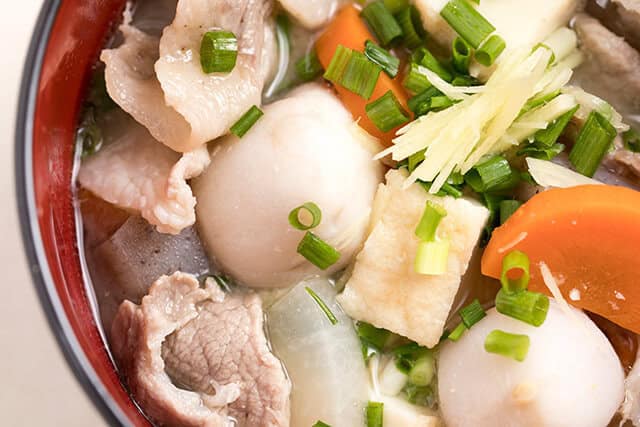
Tonjiru (豚汁), also known as Butajiru, is a traditional Japanese soup made with pork and vegetables. The name itself reflects the key ingredient, as “ton” (豚) means pork, and “jiru” (汁) means soup. Locals prepared this hearty soup by simmering thinly sliced pork in a miso-based broth, along with various vegetables like daikon radish, carrots, potatoes, and onions. Some versions might also include tofu, konnyaku, or mushrooms. The rich and savory flavor of Tonjiru comes from the combination of miso paste and the natural sweetness of the vegetables and pork fat, making it a warming dish often enjoyed in colder months.
Tonjiru History

The history of Tonjiru (豚汁) is closely linked to Kagoshima Prefecture, a region famous for its pork. Kagoshima has the highest number of pigs in Japan, and its black pigs, known as “Kagoshima black pigs,” are a recognized brand. Despite meat-eating restrictions in the Edo period due to Buddhism, the Satsuma domain (modern-day Kagoshima) continued to consume pork, wild boar, and deer, partly due to its distance from Edo and influences from the Ryukyu trade. Shimazu Iehisa, a Satsuma commander, is said to have brought black pigs from Ryukyu, and over time, these pigs were crossbred with Berkshire pigs from England.
Kagoshima also produces barley miso, which is sweet and less salty, thanks to the warm climate. Dishes like “tonkotsu” (pork bone) and “tonmiso” (pork miso) reflect the region’s strong tradition of combining pork and miso.
Health Benefits of eating Tonjiru
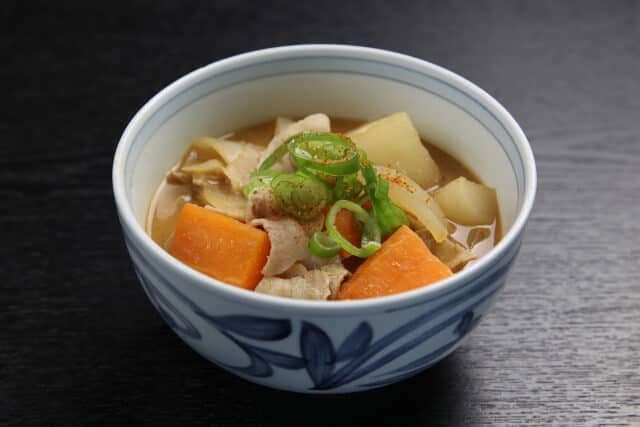
Tonjiru offers several health benefits due to its nutritious ingredients. The pork provides a good source of protein, essential for muscle repair and overall body function, while the vegetables like daikon radish, carrots, and potatoes supply important vitamins, minerals, and fiber that support digestion and boost immunity. The miso used in Tonjiru is rich in probiotics, which promote gut health, and also contains antioxidants that help combat inflammation. Overall, Tonjiru is a balanced dish that combines protein, fiber, and beneficial nutrients in a warm, comforting meal.
What are the characteristics of tonjiru soup compared to other soups?
Use of Pork
The most significant feature of pork soup is the use of pork, especially fatty belly meat. The fat from the pork is infused into the soup, providing a rich flavor and thick mouth feel.
Diverse Ingredients
A wide variety of vegetables are used in pork miso soup. The main ingredients include radishes, carrots, burdock root, and taros. Also often used are leeks, cabbage, Chinese cabbage, and potatoes. This variety of ingredients makes the dish rich in nutrients and can be enjoyed not simply as a side dish, but also as a simmered dish on its own.
The aroma of miso
Pork miso soup is seasoned with miso, giving it a rich miso aroma. The miso flavor enhances the taste of the pork and vegetables, deepening the overall flavor.
Cooling-resistant characteristics
The fat from the pork coats the surface of the broth, making it difficult to cool down. For this reason, it is especially popular in cold regions and during cold weather, and is a staple of winter soup menus.
Rich in Nutrients
Due to the use of pork and a variety of vegetables, pork miso soup is a nutritious dish. Rich in protein, vitamins, and minerals, it is also regarded as one of the healthiest meals.
FAQ
- What parts of the pork do you recommend using in pork miso soup?
Pork belly (thinly sliced) is recommended to get the full umami and fat.
- What is the recommended way to add miso when making pork miso soup?
In pork miso soup, it is recommended to add half the miso paste in two batches, so that the vegetables can fully absorb the flavor of the miso paste.
Tonjiru Recipe
Tonjiru Ingredients
| Ingredients for 4 persons | Measurements |
|---|---|
| Thinly sliced pork | 80g |
| Japanese white radish | 100g |
| Carrot | 50g |
| Taro | 100g |
| Konjac | 50g |
| Deep-fried tofu | 50g |
| [Condiments] Spring onion and ginger | 10g |
| [Soup] Dried sardines | 20g |
| [Soup] Water | 500g |
| [Soup] Barley miso | 50g |
| Oil | 20g |
How to make Tonjiru?
Put dried sardines in water, heat for 30 minutes, and remove the dried sardines 3 minutes after boiling (dried sardine stock).
Cut the ingredients into bite-sized pieces, add oil to a pan, fry the pork, then add the rest of the ingredients except for the spring onion and ginger, and once the oil has spread evenly, add the dried sardine stock from step 1 and simmer while skimming off the scum. Once the pork is soft, add the dissolved barley miso.
Place in a bowl and top with finely chopped green onions and shredded ginger.
Recommended Tonjiru Restaurants
Gochiton (ごちとん 代々木本店)
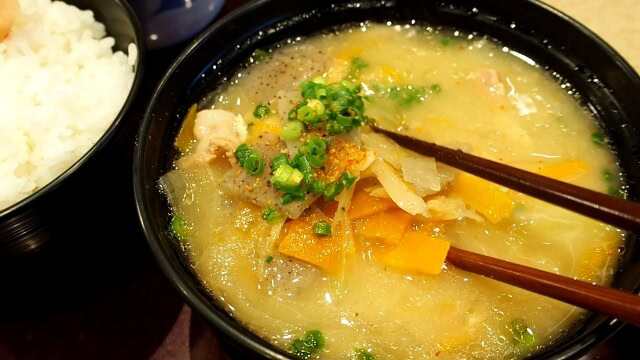
The tonjiru at this restaurant is full of large chunky vegetables. And there is a wide variety of types. In addition to the standard “Gochiton Tonjiru”, there are also unusual pork soups such as “Seared Spare Ribs” with large spare ribs, “Keema Curry Tonjiru” and “Ginger Pork Soup”. You can order rice as a set meal or a la carte.
MISOJYU(ミソジュウ)

Their popular pork soup, called “Amazing Pork Soup with Chunky Vegetables and Braised Pork,” features a delicious blend of hearty vegetables and large braised pork cubes that infuse the broth and miso with rich flavors. Carefully selected bonito flakes and kelp form the base of the broth, while an original miso blend adds depth to create an exquisite harmony in every bite.
Final Thoughts
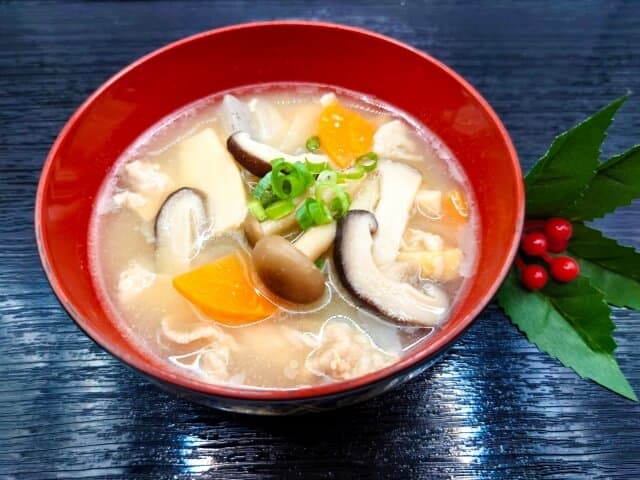
I hope this article has given you a deeper appreciation for Tonjiru and its rich cultural and culinary history, particularly its roots in Kagoshima’s pork and miso traditions. Whether you’re enjoying it at a local restaurant or trying to make it at home, Tonjiru offers a taste of Japan’s comforting, hearty flavors. I encourage you to explore this flavorful dish and experience for yourself the warmth and depth it brings to the table.
There are other soups in Japan you can try out during colder or winter season!
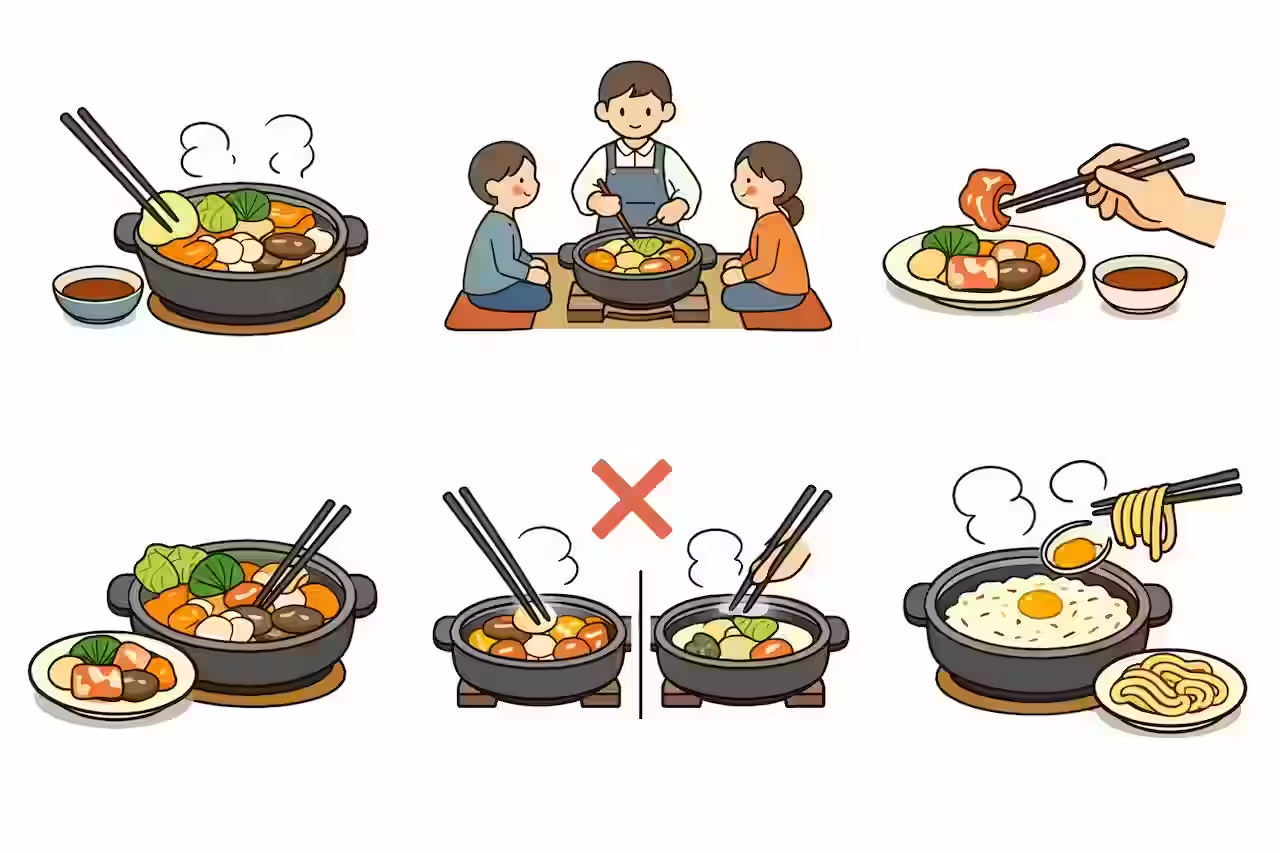

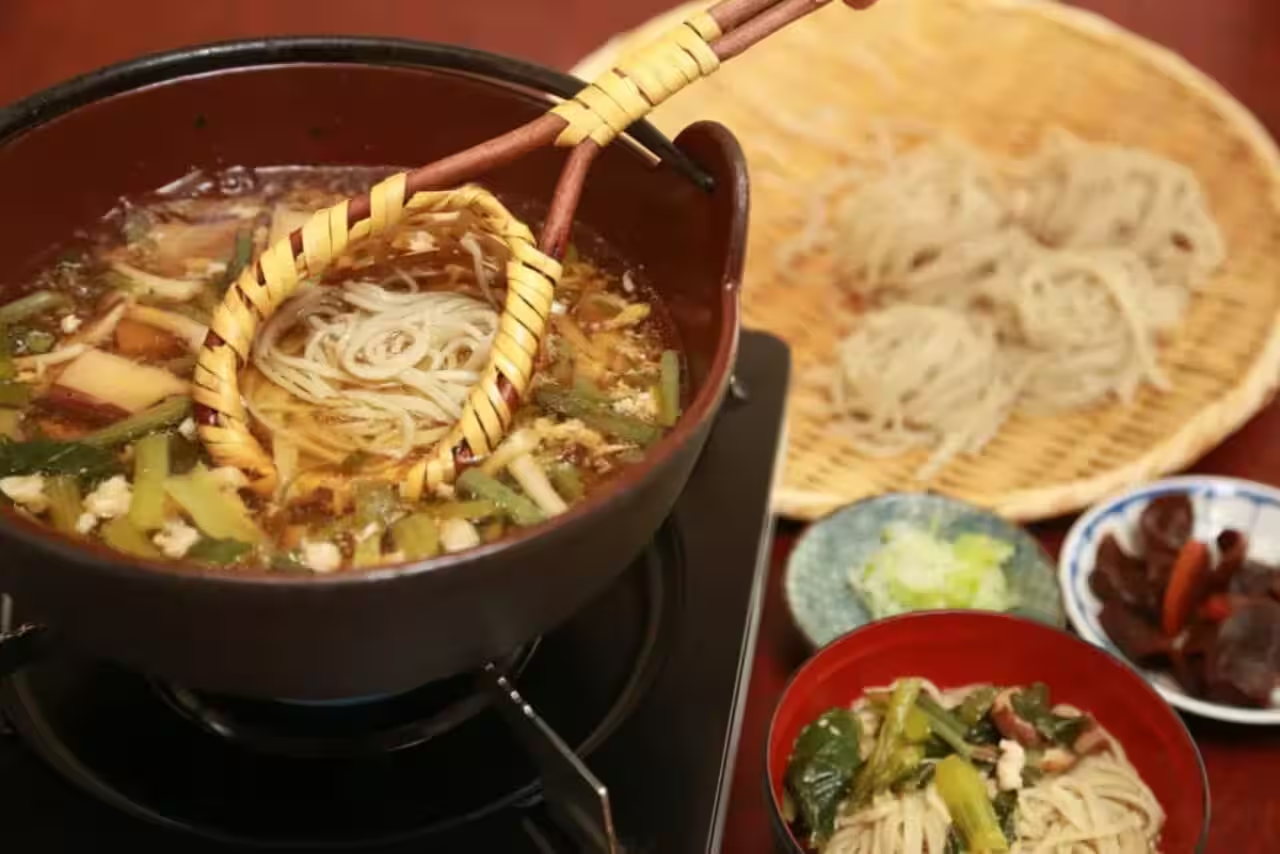

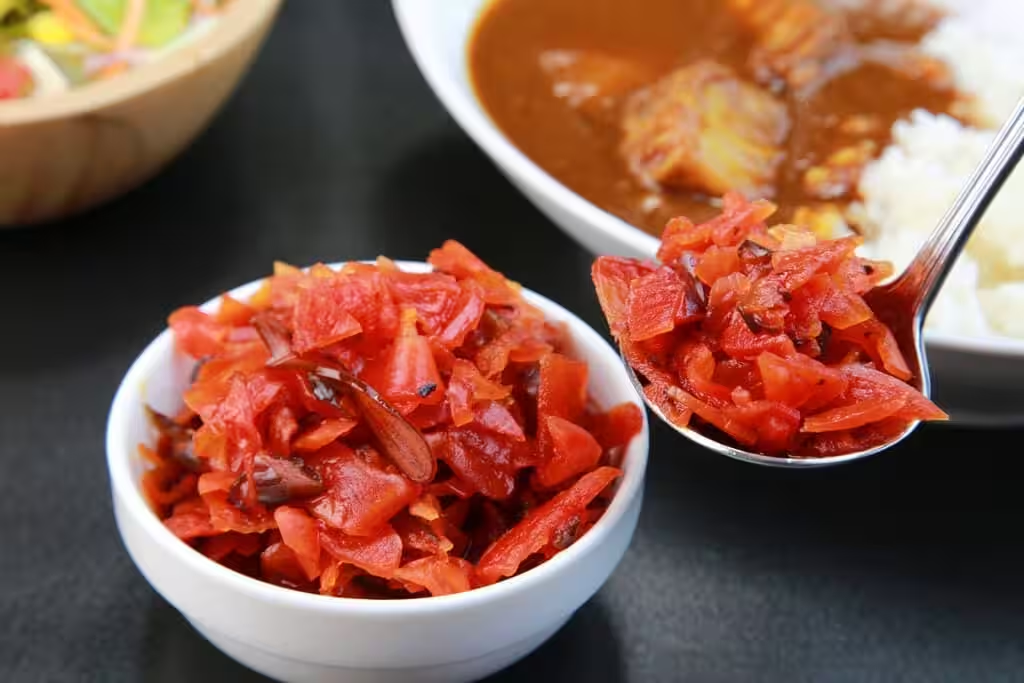

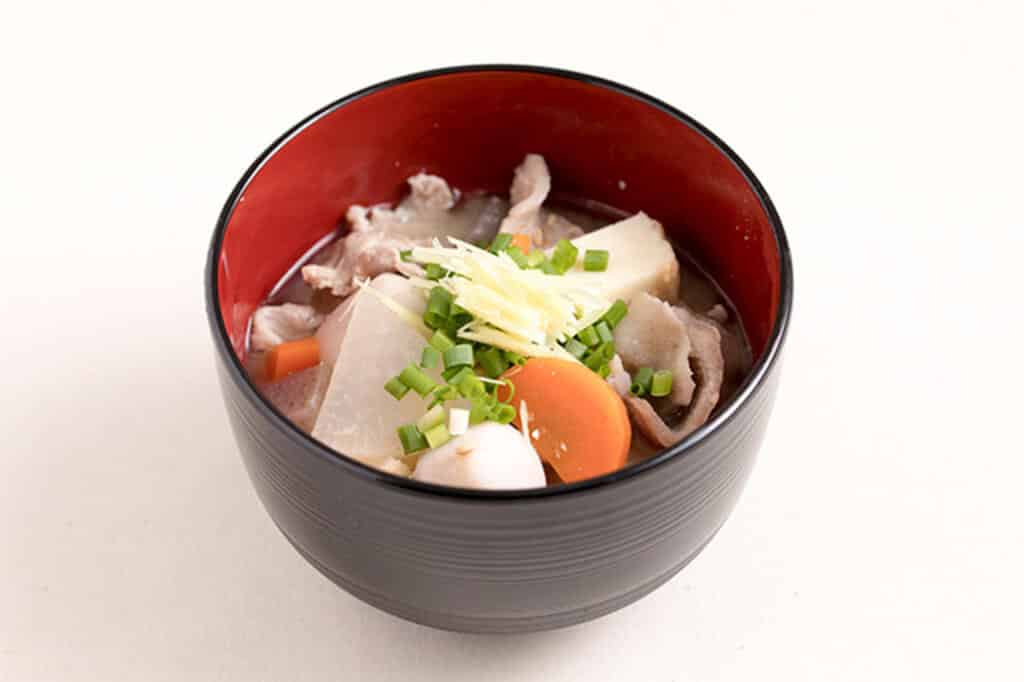
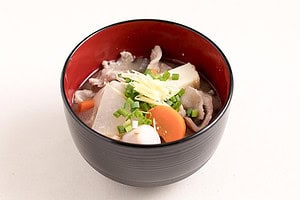
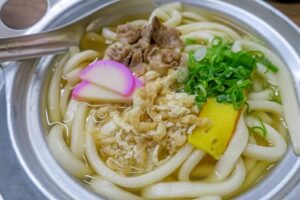
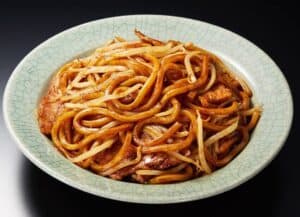
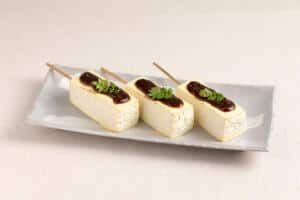
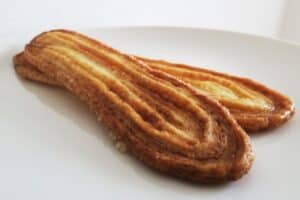

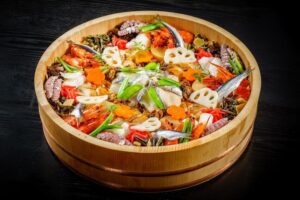
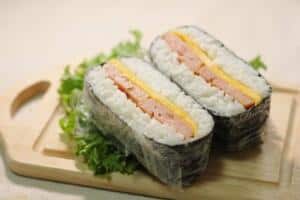
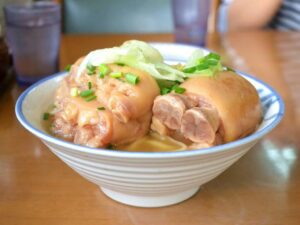
Comments